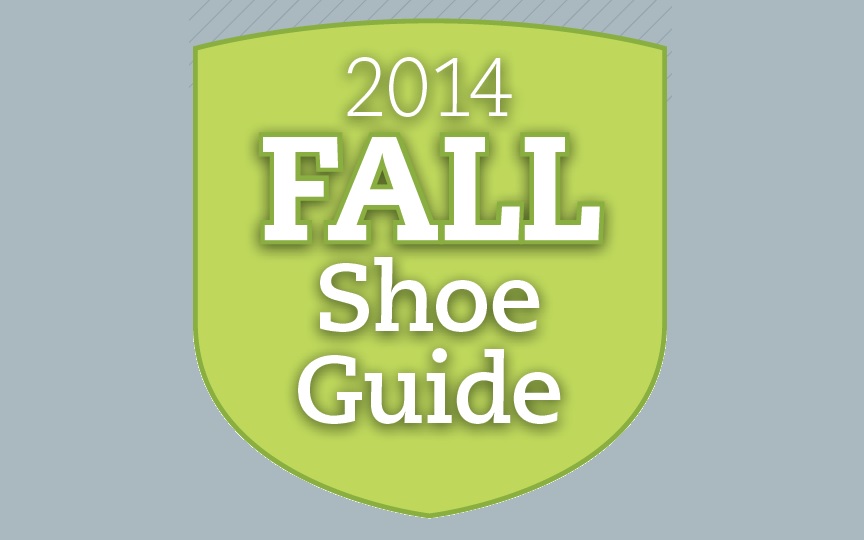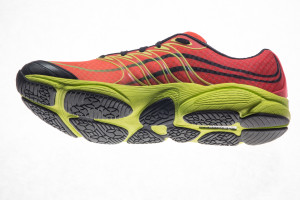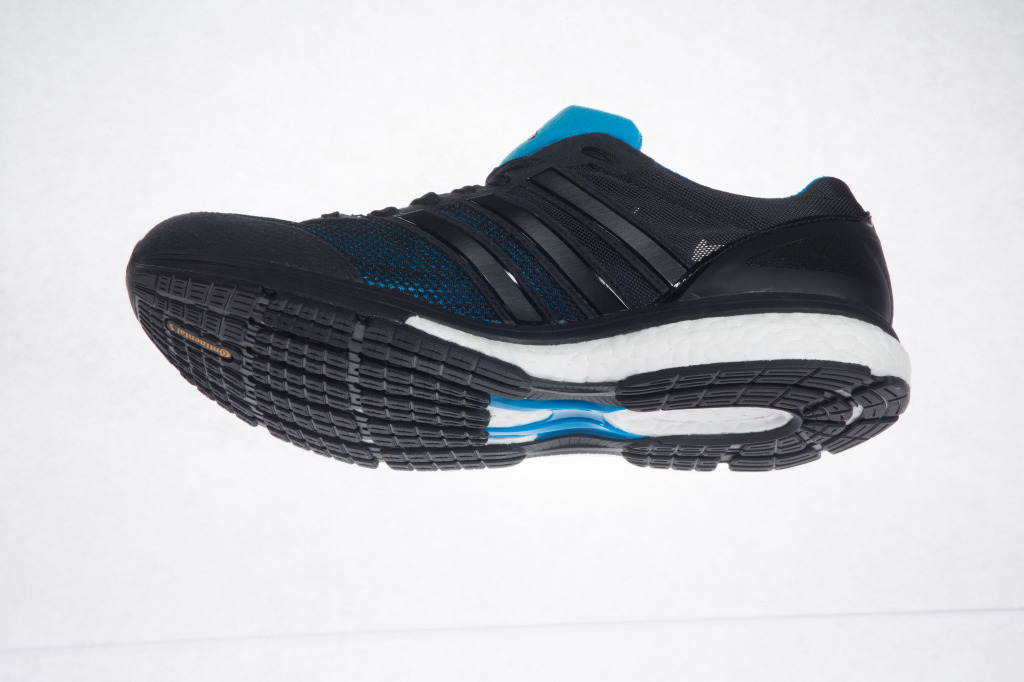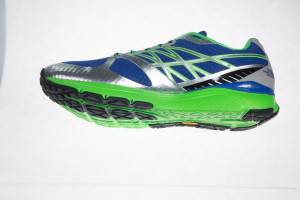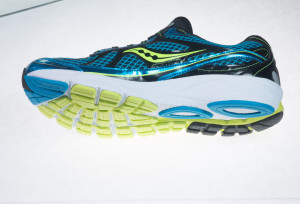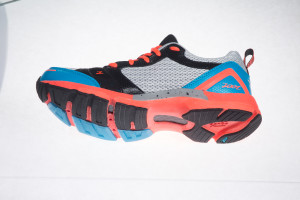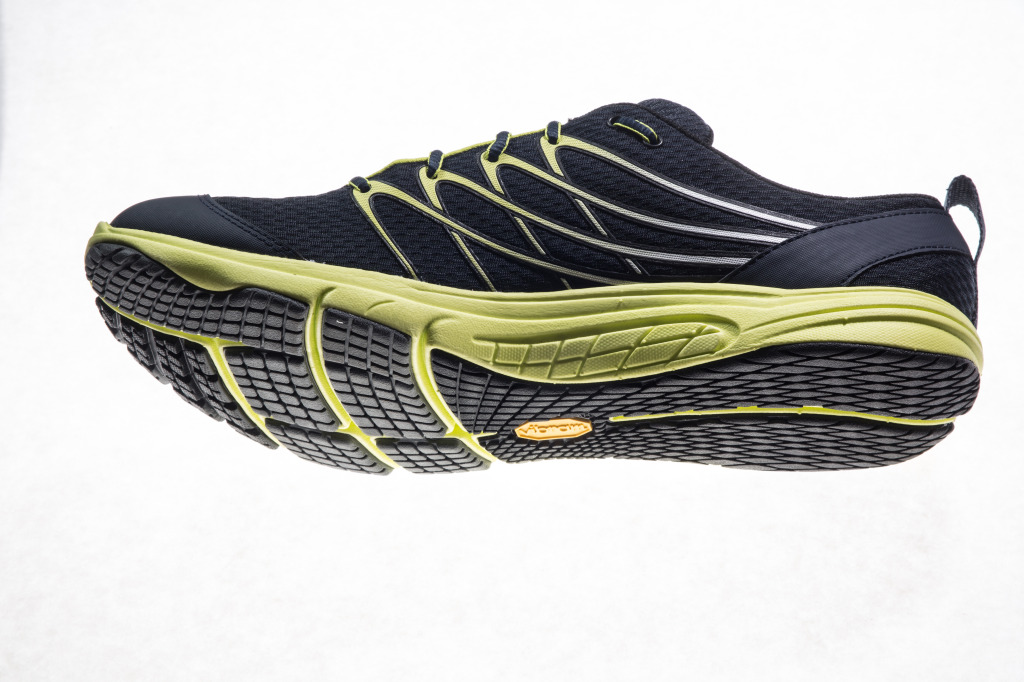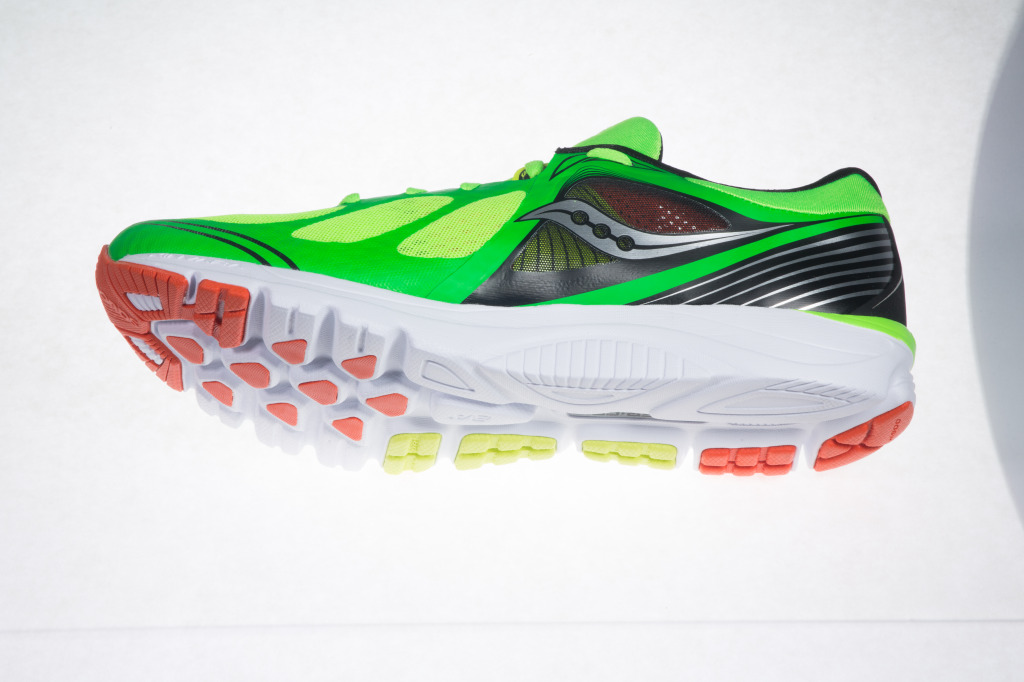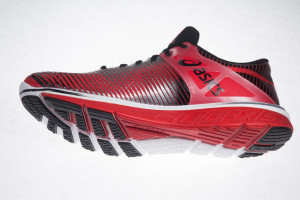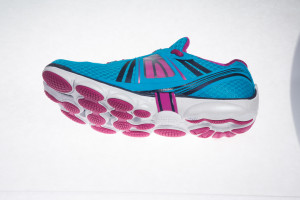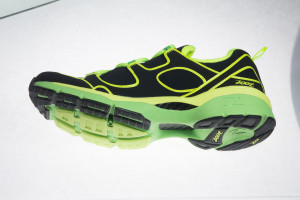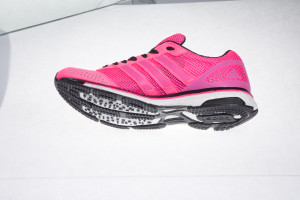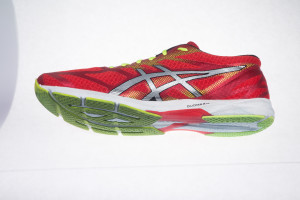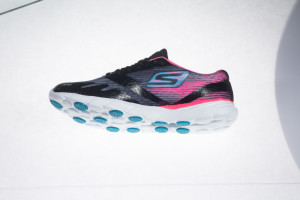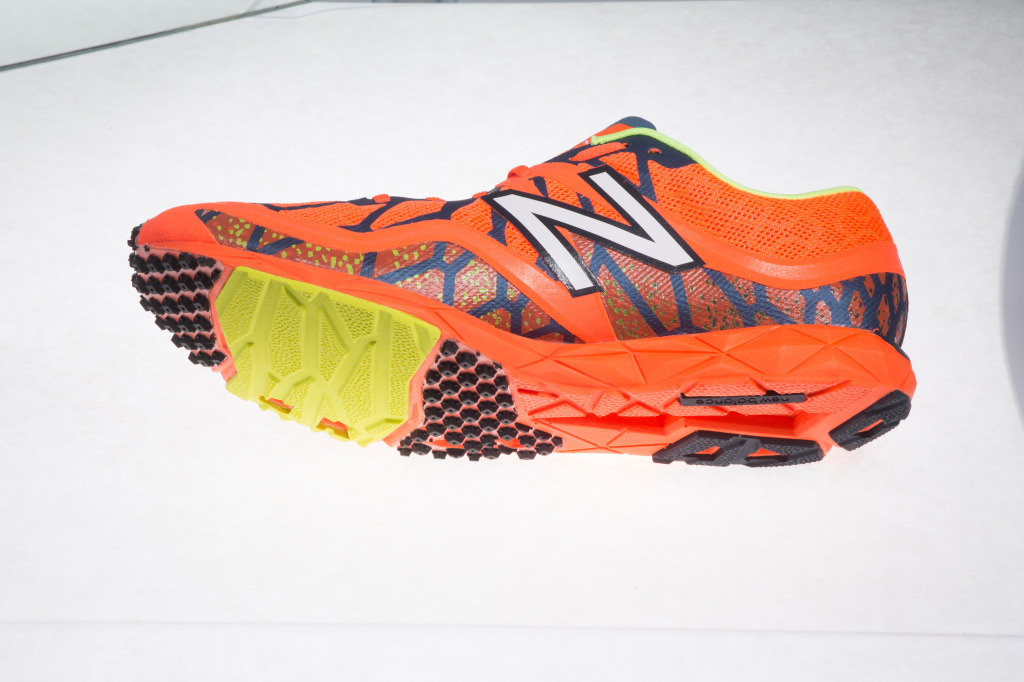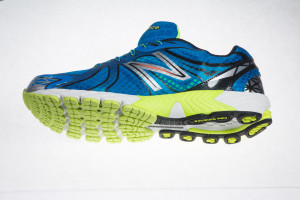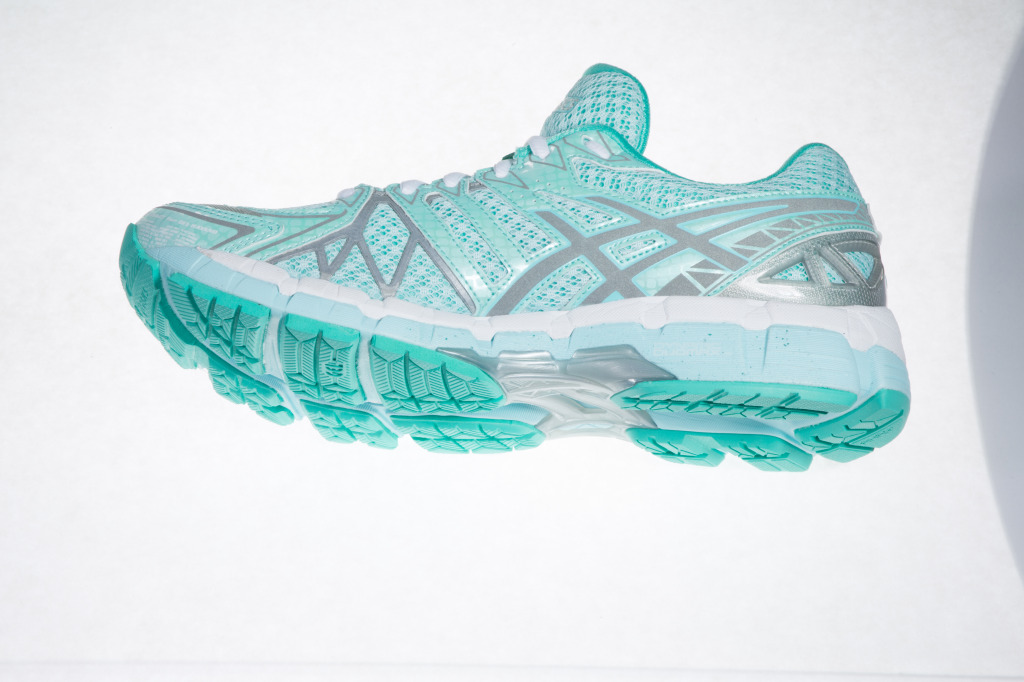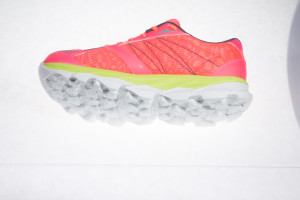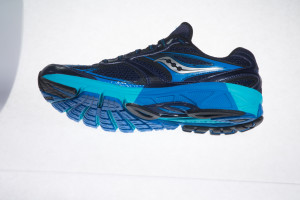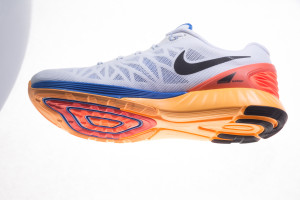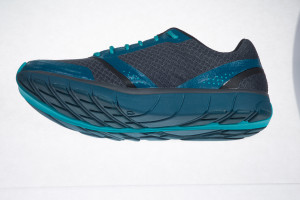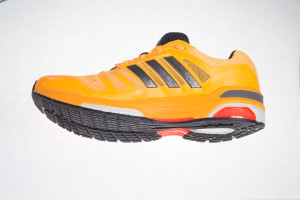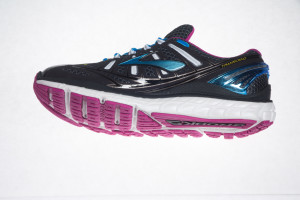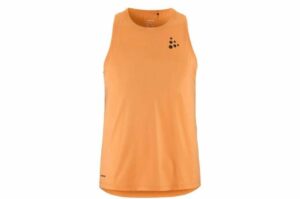2014 Fall Running Shoe Guide
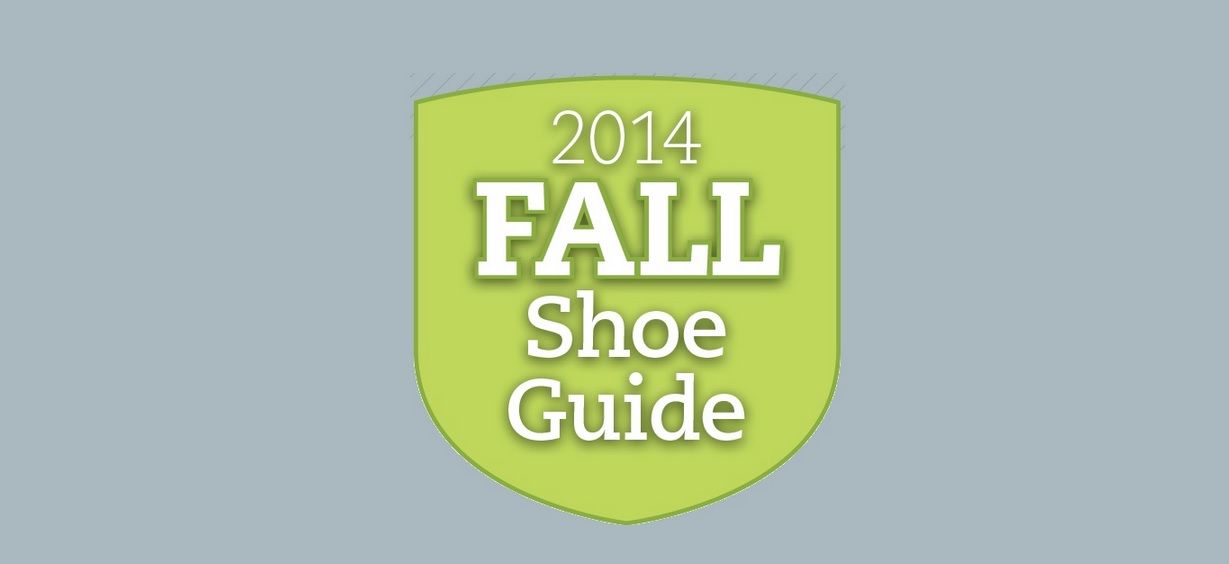
We put 21 fall running shoes through extensive testing so that you can find your perfect fit for the fall season.
How We Test
- Each shoe is tested by at by least two different runners
- For a minimum of 50K
- During at least one hill or interval workout
- In dry and wet conditions
Neutral
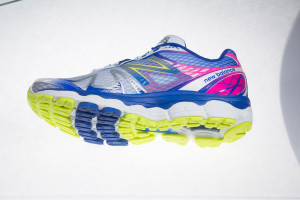
New Balance 880
Men’s: 9.5 g (269 oz.) Women’s: 230 g (8.1 oz.)
Heel: 33 mm Forefoot: 21mm, $150
Now in its fourth iteration, this neutral everyday trainer is slightly lighter than the previous version, while making subtle improvements to the design. New Balance has gone with a sole that’s built on a stable bed of blown rubber pods, slimming it down to just 269 grams.
The upper incorporates New Balance’s Phantom Fit seamless binding with a breathable mesh that doesn’t chafe. The toe box is roomy and there is ample forefoot cushioning. The one minor design flaw is in the shank embedded into the outsole. Small rocks can get stuck there.
If you’re looking for a somewhat structured and medium cushioned ride, the 880v4 is a great option.
 Merrell Allout Flash
Merrell Allout Flash
Men’s: 184 g (6.5 oz.), Women’s: 159 g (5.6 oz.)
Heel: 14 mm, Forefoot: 8 mm, $130
The Allout series is designed to appeal to runners that are curious about Merrell’s barefoot approach
but need a bit more cushioning and a heel-to-toe drop. The Flash has a very soft midsole that is nicely counterbalanced with a firmer forefoot meant to give runners more feel for the road. This is essentially the barefoot shoe for those that aren’t
interested in the potential risks of minimalist shoes.
The Flash is a very comfortable shoe. It’s extremely light, but is Merrell’s most road-focused and structured offering yet. The outsole has added rubber so that it will last hundreds of kilometres on the road. The attractive upper, wide toe box and clever lace-locking system were all big hits with our testers. The Allout Flash shows that Merrell are serious about the road.
EDITOR’S PICK: Best Neutral Shoe
Adidas Boston Boost
Men’s: 252 g (8.9 oz.), Women’s: 210 g (7.4 oz.)
Heel: 29 mm, Forefoot: 19 mm, $150
Adidas’s popular lightweight neutral shoe finally gets the Boost update. The Boston built a grassroots reputation over the last few years as the perfect everyday trainer for efficient runners. It’s a slightly more built-up variation on Adidas’s Adios racing f lat, but the Boston is designed to last longer and be more versatile.
The upper is vastly improved over the previous Boston. The shoe looks sleek and minimal, with highly breathable thin mesh panelling and a nubuck reinforced toe for improved durability.
The Boston Boost would also work well as a marathon flat for many runners, making this shoe a great training and racing partner.
 The North Face M Ultra Smooth
The North Face M Ultra Smooth
Men’s: 283 g (10 oz.), Women’s: 227 g (8.0 oz.)
Heel: 28 mm, Forefoot: 20 mm, $120
The North Face’s first road shoe is surprisingly road friendly. Yes, there is a midsole plate that makes the Ultra Smooth suitable for trail running. Of course, this means it’s stiffer than many road shoes, although the Vibram sole is flexible in the forefoot. The upper fits well, with a thin tongue and space in the forefoot. Light for a neutral trainer, this is for runners who split their workouts between the trail and the road.
 Saucony Ride 7
Saucony Ride 7
Men’s: 266 g (9.4 oz.), Women’s: 241 g (8.5 oz.)
Heel: 26 mm, Forefoot: 18 mm, $150
With the Ride 7, Saucony set out to design a neutral trainer that came in under 10 oz. while providing
enough cushioning to make the shoe an everyday option. They stripped away the plastic shank and
flared out the forefoot for more ground contact upon touchdown. Our neutral shoe testers enjoyed
the 8 mm drop and even feel underfoot.
The Ride 7 isn’t a flashy shoe, instead relying on smart design that will satisfy core neutral shoe enthusiasts looking for a solid shoe for logging quality mileage.
 Zoot Tempo Trainer
Zoot Tempo Trainer
Men’s: 292 g (10.3 oz.), Women’s: 240 g (8.5 oz.)
Heel: 21 mm, Forefoot: 11 mm, $130
The Tempo Trainer is the closest Zoot, a well-known triathlon brand, has come to a straightforward road trainer. The Hawaiian company sticks with a very firm midsole with a carbon-fibre shank embedded in the midfoot that is unsurprisingly best suited for tempo runs. The upper of the Tempo Trainer is a two-layer mesh that does a decent job letting sweat evaporate if you plan on using this shoe as a longer distance tri racer as a well as useful uptempo trainer. Our testers were impressed with the neoprene tongue and securely locking heel collar.
The Tempo Trainer is best suited for those that really like to feel what’s going on under their foot. The ride is extremely responsive, much like a racing flat, for what is otherwise an everyday shoe.
Lightweight/Minimal
EDITOR’S PICK : Best Lightweight Shoe
Merrell Bare Access
Men’s g 187 g (6.6 oz.), Women’s 164 g (5.8 oz.)
Heel: 8 mm, Forefoot: 8 mm, $110
With the Bare Access 3, Merrell ports over everything they’ve learned from making a quality minimal trail shoe to
this more road-friendly option. Merrell’s zero drop shoe has an acceptable amount of soft, f lexible midsole and a tightlypatterned, grippy Vibram outsole. Our testers found it felt gentle enough on the road without losing that barefoot feel. The Bare Access 3 really performed on hard-packed trails.
Merrell shoes are known for their wide toe box for significant splay and the Bare Access series provide ample room so you can really feel the ground on your forefoot.
The Bare Access 3 is a great example of a minimalist shoe done correctly. Efficient runners will adore this nimble companion.
EDITOR’S PICK: Best Update
Saucony Kinvara
Men’s: 218 g (7.7 oz.), Women’s: 190 g (6.7 oz.)
Heel: 22 mm, Forefoot: 18 mm, $130
The Kinvara has always been a popular choice for both racing and training. This surprisingly supportive ultra-light option has a very soft, marshmallowy ride that has developed a cult following in the running community.
Version five shows that Saucony is listening to their loyal fan base. They’ve tweaked the design to the mesh upper and included some rubber to the outsole to make the Kinvara more durable, while keeping it feather-light. If you can handle a
lightweight neutral shoe, this will be the perfect fit for both training and racing.
 Asics Gel-Super J33
Asics Gel-Super J33
Men’s: 207 g (7.3 oz.), Women’s: 193 g (6.8 oz.)
Heel: 20 mm, Forefoot: 14 mm, $130
The J33 looks like a racing flat but feels more supportive. The minimal, seamless upper is actually two pieces: a thin outer membrane that holds the shoe together and gives it a nice look, and the inner mesh that is both comfortable and breathable
The “33” in the name alludes to the number of bones in the human foot, and the J33 is a part of Asics’s new Natural33 series, which all have the same drop, allowing runners to move back and forth between models during a training week. The Fluid Axis midsole and gel units provide good support and cushioning for such a lightweight shoe.
 Brooks PureConnect 3
Brooks PureConnect 3
Men’s: 213 g (7.5 oz.), Women’s: 173 g (6.1 oz.)
Heel: 14 mm, Forefoot: 10 mm, $140
Brooks updates the colourways for this responsive minimal shoe. Version three includes increased cushioning and an expanded toe box to allow for more toe splay. The PureConnect has a secure fit thanks to the Nav Band, a piece of material that hugs the arch and holds it in place.
The PureConnect 3 sports a 4 mm drop and the pod-shaped cushioning encourage a mid- to forefoot strike without being too forceful. The upperis made mostly of mesh and has few seams and no reported hotspots, even though this shoe fits snugger than most.
 Zoot Ultra Kalani 3.0
Zoot Ultra Kalani 3.0
Men’s: 281 g (9.9 oz.), Women’s: 255 g (9 oz.)
Heel: 25 mm, Forefoot: 15 mm, $160
Triathletes have long realized the perks of sockless, quick-drying, easy to put on and take off shoes. The Ultra Kalani 3.0 is a neutral trainer with the stiffness and responsiveness of a racer. The carbon-fibre insert keeps the shoe from flexing and
the ample crash pad makes for a comfortable ride if you’re a heel striker.
The stretchy sock-like upper fits on the tight side, so it’s wise to test these shoes before buying them. The upside is that they are designed to be worn sockless, which many of our testers enjoyed. At just under 10 oz., this is a durable, if heavy, trainer for those looking for a more responsive ride.
Racing Flats
 Adidas Adizero Adios Boost 2
Adidas Adizero Adios Boost 2
Men’s: 221.1 g (7.8 oz.), Women’s: 201 mm (7.1 oz.)
Heel: 27 mm, Forefoot: 18 mm, $170
The Adios have delivered multiple marathon world records over the years. It’s not surprising then that thousands of recreational runners have opted to lace up these neutral racing flats.
The Adios are now in their second generation with Adidas’s Boost midsole technology, which is lighter and springier than EVA foam. The Adios are fast, but Adidas also takes into consideration the recreational runner’s need for slight pronation correction in the heel, as well as a subtle plastic shank in the arch that keeps the foot in a forward motion. The Adios Boost 2 have removed the plastic collar around the heel area, going for an old school look. These Adios closely resemble the original iteration. They look fast on the roads and could pull double-duty as a casual shoe. But that would be a waste of one killer competitor.
 Asics Gel-DS Racer
Asics Gel-DS Racer
Men’s: 179 g (6.3 oz.), Women’s: 158 g (5.6 oz.)
Heel: 23 mm, Forefoot: 15 mm, $140
This past spring, we gushed about Asics’s Hyper Speed 5, which is a great, no frills marathon racing flat. Asics’s Gel-DS Racer 10 is the more robust sibling of the Hyper Speed. It offers some stability and is more durable without adding bulk or taking away from the speedy feel of the Hyper Speed.
The DS Racer has a classic, low-key look. The upper is seamless and very breathable. Those familiar with Asics stability shoes will appreciate the use of the Duomax midsole technology to correct pronation at the late stages of a race.
 Skechers Go Meb Speed 2
Skechers Go Meb Speed 2
Men’s: 193 g (6.8 oz.), Women’s: 184 g (4.9 oz.)
Heel: 27 mm, Forefoot: 23 mm, $130
Skechers hit the jackpot with Meb Keflzighi. The Go Meb instantly became the shoe of the spring after Meb stunned the world with his win in Boston. But will the shoe work for you?
The close-fitting upper and soft, mid-foot cushioning belie the great value this shoe represents. The upper itself is snug and supportive, but not for runner’s who prefer a stiffer shoe. A good shoe for serious runners with neutral or mid-foot strike. If
you’re light on your feet like Meb this is the shoe for you.
EDITOR’S PICK : Best Racing Flat
New Balance RC1600v2
Men’s: 164.4 grams (5.8 oz.), Women’s: 130 g (4.6 oz.)
Heel: 21 mm, Forefoot: 15 mm, $150
This supremely lightweight racer was perfect for 5ks and 10ks for many of our testers, although New Balance advertise this as the world’s lightest marathoning shoe. This smart update thankfully didn’t stray too far from what made this model so desirable, but New Balance has found a way to improve the design.
The major difference can be found in the upper, where the seamless Fantom Fit has been reorganized. Out is the f limsy mesh, which our testers found tore after repeated use. A sturdier series of seamless overlays should make this shoe much more resilient without adding weight. New Balance have increased the amount of grippy Dynaride rubber nodules, which provide great traction while you’re moving fast.
Stability
 New Balance 870v3
New Balance 870v3
Men’s: 255 g (9 oz.), Women’s: 230 g (8.1 oz.)
Heel: 24 mm, Forefoot: 15 mm, $150
The 870 is the ideal choice for runners that don’t need too much help with stability until they begin to fatigue. It has a subtle medial post and uses a plastic T Beam shank to keep the shoe from feeling sloppy. New Balance opted not to update their successful design in 2014, but that was a wise move, as it is a great build that needs little tweaking.
The 870 stays light by using no-sew construction in the upper, which also reduces hot spots. The forefoot is very lightly cushioned and very flexible, providing a more responsive feel. The heel is more traditional for a stability trainer, softening the blow substantially for heel-strikers.
EDITOR’S PICK : Best Stability Shoe
Asics Gel-Kayano 20
Men’s: 260 g (9.2 oz.), Women’s: 260 g (9.2 oz.)
Heel: 22 mm, Forefoot: 12 mm, $210
Now in the 20th iteration of the Kayano, Asics has mastered this workhorse stability trainer. This much-adored shoe gets a colourway update for the fall, but sticks with the features of earlier versions, including a premium level of support and two
newer enhancements. The new Fluidfit stretchable overlay forms to the foot for a customized fit. Asics stays with their new midsole compound called Fluidride, which our testers said felt structured but not too firm.
Gradual pronation control is provided by the Dynamic Duomax support system for runners needing a mildly supportive shoe. This all-around trainer is sturdy yet light enough for marathon pace or tempo work for many runners.
 Skechers Gorun Ultra
Skechers Gorun Ultra
Men’s: 258 g (9.1 oz.), Women’s: 201 g (7.1 oz.)
Heel: 27 mm, Forefoot: 23 mm, $120
Skechers get behind the maximalist movement with this chunky mileage machine. If you’re a heel-striker, you’ll enjoy the 40 mm of midsole cushioning on the back end of the Ultra. For such a large shoe, the Ultra is shockingly light, thanks to Skechers’ Resalyte midsole technology that delivers the company’s now signature super-soft ride.
The Ultra isn’t for speed demons. Our testers found it best for long, slow runs and days where you want to be gentle on your legs. But this shoe wasn’t designed with track workouts in mind, so the Ultra should satisfy the needs of those looking for comfort over performance.
 Saucony Guide 8
Saucony Guide 8
Men’s: 281 g (9.9 oz.), Women’s 238 g (8.4 oz.)
Heel: 26 mm, Forefoot: 18 mm, $150
The Guide gets an aggressive colour update on its years-in-the-making reboot of the model. Our testers loved this reliable everyday trainer, which is why we awarded it our editor’s pick last spring. The Guide 8 features Saucony’s firm, light and responsive PowerGrid midsole from heel-to-toe, providing gentle support without feeling intrusive under-foot.
The Guide 8 employs a sturdy but breathable upper and is impressively light for a premium stability shoe. Saucony does have to make some compromises in order to satisfy so many different running styles, but the Guide 8 is remarkably light
and versatile.
 Nike LunarGlide 6
Nike LunarGlide 6
Men’s: 258 g (9.1 oz.), Women’s: 221 g (7.8 oz.)
Heel: 28 mm, Forefoot: 18 mm, $140
Since the LunarGlide technology first arrived on the scene in 2008, Nike has expanded it out from running to many other sports. Version six is the most complete realization of the super-plush midsole. The slightly-firmer inner heel carries the runner onto an exceptionally soft mid-foot strike. The outsole pattern on the forefoot seems like it’s just for looks, but it’s actually a cleverly-designed guidance and energy-release system to maximize toe-off.
The upper is where the LunarGlide 6 really shines. The shoe feels similar to Nike’s other premium cushioning trainers on the foot. Nike has gone with a paper-thin foam architecture around the mid-foot and toe box to trim off about half an ounce from the previous version. Our mostly-white pair only stayed pretty for about the first kilometre, but the LunarGlide 6 also comes in a variety of other colourways.
 Pearl Izumi Road M2
Pearl Izumi Road M2
Men’s: 281 g (9.9 oz.), Women’s: 246 g (9.7 oz.)
Heel: 25 mm, Forefoot: 16 mm, $170
The Road M2 is Pearl Izumi’s stability offering in their E:Motion line-up. The M2 is actually a much firmer ride than the company’s neutral offerings (the N series). Pearl Izumi employs a very dense midsole with what they call Dynamic Offset, a
design concept that rocks the shoe from the heel onto the forefoot.
The result is a stability model that has a ride much more like a lightweight trainer or trail shoe. The outsole isn’t very aggressive, which is great for most conditions, but tough for wet, muddy or snowy days. The upper is among the most breathable and lightweight of any stability shoe that we’ve tested. If you need a stability trainer but like to feel the road
the M2 is a great option.
 Adidas Sequence Boost
Adidas Sequence Boost
Men’s: 300 g (10.6 oz.), Women’s: 261 g (9.2 oz.)
Heel: 32 mm, Forefoot: 22 mm, $160
Adidas has been reinvigorated with their Boost technology. The legacy models such as the Sequence are now outfitted with a lighter, more responsive midsole. Adidas continues its partnership with Continental, providing a tough, grippy rubber outsole.
The Sequence has a light, knitted toe box with glued overlays to keep weight down while looking good and lasting longer than many everyday trainers on the market. Our testers felt that the Stableframe cushioning in the arch was barely noticeable while providing excellent pronation correction. Pronators will appreciate how quick this shoe feels for an everyday trainer.
 Brooks Transcend
Brooks Transcend
Men’s: 340 g (12 oz.), Women’s: 298 g (10.5 oz.)
Heel: 24 mm, Forefoot: 16 mm, $190
The Transcend is one of Brooks’s most significant statements for 2014. For those who are curious about the maximalist movement but still like a conventionally constructed shoe, the Transcend should provide superior support without feeling too high off the ground. Much of the company’s marketing has centred around how cloud-like the cushioning feels, and the Transcend is indeed like running on Cloud 9. The transition from heel to toe is very smooth and severe over-pronators will find the guide rail built into the instep very appealing. The Transcend is on the heavy side, even for a stability shoe, but it provides a very smooth, plush ride that will be worth the extra heft for many.
